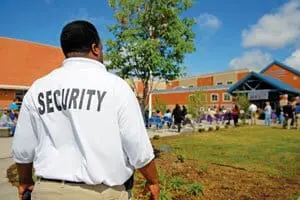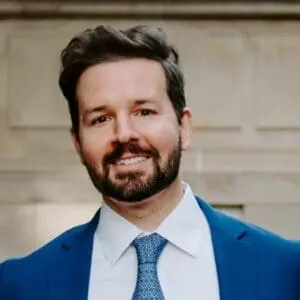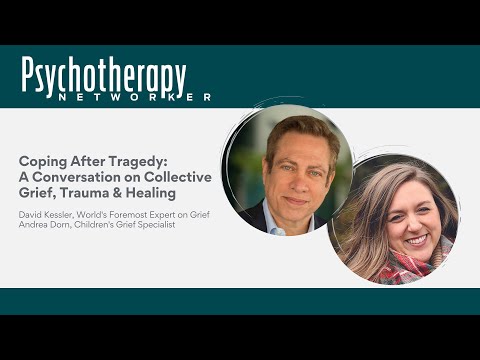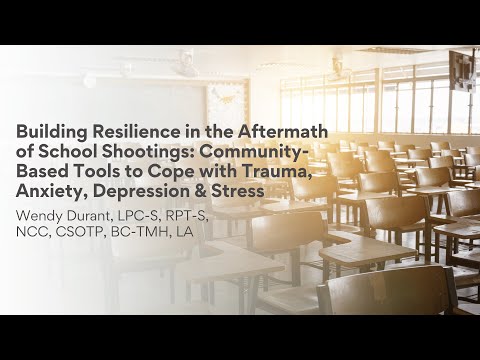Twenty years after “the big one,” as he calls it, police psychologist John Nicoletti remembers well the day in April of 1999 when two teenagers opened fire at Columbine High School, claiming the lives of 12 students and one teacher before taking their own. At the time, Nicoletti was 15 years into his work training local law enforcement on how to identify and manage trauma. He’d helped hundreds of people work through flashbacks, nightmares, and a shattered sense of safety. But as he sped to Columbine that afternoon, called in by local police to do crisis interventions just 20 minutes after the shooting had stopped, he realized he had no clear guidelines for working under these circumstances. “Our response wasn’t developed at that point,” he recalls. “We were overwhelmed. When you get on the scene of something like that, your role just starts mutating based on need.”
Today, his team is more prepared to respond to school shootings: unfortunately, they’ve had more practice and opportunities to learn from other communities. Nationwide, more than 228,000 students have been exposed to gun violence at school since Columbine, and the mental health community has risen to meet the grim challenge. At Nicoletti’s headquarters in Lakewood, Colorado, just three miles from where the massacre occurred, there isn’t a single member of his team of 14 psychologists who doesn’t call themselves a trauma specialist.
But in an age where Columbine has become both a noun and verb, many area students still glance over their shoulder when walking down the street or hallway. And when they sit down in a movie theater or cafeteria, they already know which exit they can get to fastest. The sad reality is most students these days have come to accept the possibility of a school shooting, Nicoletti says. Thus, there’s a growing national conversation about how schools should conduct active-shooter drills in an effective yet sensitive manner.
According to a 2018 Pew Research study, 57 percent of American teenagers worry about a shooting at their school. Today, nine out of 10 public schools conduct these drills, according to the National Center for Education Statistics. During the 2017–18 school year, that equated to more than 4.1 million students—including 220,000 kindergartners and preschoolers—experiencing at least one active-shooter drill, according to a Washington Post survey. But despite their prevalence, there’s little research into the long-term mental health effects of these drills, and a lack of clarity about how therapists should work with children who get anxious or traumatized after going through them.
Of course, general lockdown and disaster drills have a long history—think back to the much-lampooned Cold War–era drills that advised hiding under desks in case of a nuclear bomb—but school-shooting drills are a much newer phenomenon. There’s virtually no consensus on best practices for these drills, and some critics say there’s no evidence that they make schools any safer.
Some protocols instruct students to sit in locked, darkened classrooms with the blinds drawn. Others encourage teachers to rally students to improvise barricades. And some involve law enforcement playing the role of a shooter, moving through hallways, checking classroom doors, and in some reported cases, even firing blank rounds. The Indianapolis Star reported that, during one active-shooter drill held in January, terrified Indiana elementary teachers were asked by police to kneel down before being shot, execution-style, with plastic pellets. “This is what happens if you just cower and do nothing,” one teacher recalled the officers saying.
Some mental health organizations have made efforts to reduce the negative impact these drills can have on student mental health. Last year, for example, the American Counseling Association published a resolution that underscored the importance of school counselors as “central participants in the planning of school-based violence-prevention and safety strategies.” The National Association of School Psychologists released a list of best practices for drills, offering workshops for schools looking for more guidance. And since 2001, the UCLA–Duke University National Center for Child Traumatic Stress, in partnership with the Substance Abuse and Mental Health Services Administration, has established 100 centers nationwide that work directly with school districts to create standards for school drills.
But in the absence of a consensus on how to address the psychological fallout from these drills, it’s often lone mental health workers with backgrounds in anxiety and trauma who are at the forefront of developing more effective approaches. Some have noticed interesting trends over the last two decades.
Sandy Austin is a school counselor and crisis specialist with the American School Counselor Association who’s currently on staff at a Colorado high school. In her 21-year career, she’s responded to four school shootings, doing week-long crisis counseling with middle and high schoolers in their aftermath.
Recently, she says, the students she works with have become much more proactive in shaping how drills are conducted and calling attention to the problem of gun violence. It’s a phenomenon she credits to the example set by survivors of the 2018 Marjory Stoneman Douglas High School shooting in Parkland, Florida, who attracted national attention by campaigning for gun reform in the popular media.
“Today’s kids are more empowered,” Austin says. “They realize they don’t have to be victims, that they don’t have to just cower and be afraid.” This doesn’t mean that students are taking school-shooting drills lightly. Many kids Austin works with, particularly those with histories of anxiety and trauma, or special needs, are especially triggered by the drills, she says, and need individualized attention when they occur.
During a recent drill at her school, Austin pulled aside a first-year student who had a history of severe anxiety and was prone to hyperventilating and jumping at loud noises. “There’s going to be a drill today around lunchtime,” she told the boy. “Now, it’s just a drill, but try to stay with me during the whole thing.” He nodded.
As the alarms went off and students filed out of the cafeteria single-file and onto the soccer field, Austin pointed to a nearby oak tree. “You’re doing a great job right now,” she told him. “We’re going to go right over there and watch what happens, so we’ll know what to do. See that man coming around on the golf cart? That’s our security guy. You know him, right?” The boy nodded again. “He’s making sure everyone’s accounted for before the firefighters come to check the alarms and make sure everything’s working.”
The boy’s eyes darted around anxiously, so Austin kept talking. “Do you think they’ll go into our classroom, too? What about our lunches? Do you think they’re going to get cold?” The boy’s expression softened, and he thought for a moment. “I didn’t even think about that,” he replied. “I guess they could.” With a walkie-talkie in hand—standard equipment for all active-shooter drills at her school—Austin radioed the other teachers to let them know the boy was okay.
What may have appeared to be casual chitchat was actually an intentional intervention, Austin says. First, she made sure to be fully aware of the boy’s history and triggers. Second, she gave him her undivided attention. Third, she tailored her words to his comprehension abilities and used a soothing tone of voice. Fourth, she tried to keep him busy.
“I try to talk so students don’t have time to ruminate and let their anxiety get out of hand,” she says. “But if I get the feeling I’m stimulating them too much by talking, then I back off a bit.” Afterward, she contacts the student’s parents to let them know about the drill and how their child reacted to it. If children are still feeling anxious when it’s over, Austin says she sometimes recommends they take the rest of the day off, or schedule an appointment with their regular therapist as soon as possible.
But therapists in this position can’t work in a vacuum, Austin says. There needs to be collaboration among clinicians, school administrators, teachers, parents, and first responders to make sure drills are as sensitive as possible. “There’s a lot of teamwork involved in doing this well,” Austin remarks. “It takes a village.”
Two years after the Columbine shooting, Austin founded the B.I.O.N.I.C. (“Believe It Or Not, I Care”) program for elementary school through college-age students, encouraging them to reach out to isolated, bullied, and otherwise vulnerable peers. Since then, more than 950 schools worldwide have inquired about starting their own B.I.O.N.I.C. program. Austin’s hope is that not only will these newly empowered students play a role in shaping drills to come, but they might help mitigate the conditions that lead to school shootings in the first place. “These kids have the energy and the desire to do something about their fears and anxieties, to take some power back as they learn how to protect themselves,” she says. “We’re entering a new era.”
For therapist Lynn Lyons, who specializes in the treatment of anxiety disorders in kids and families, talking about school shootings and drills with children requires an unconventional approach. In most contexts, Lyons encourages her young clients to get familiar with their anxiety, so they can recognize how irrational it can be. For example, “If they asked, ‘What if I throw up?’ I’d say, ‘Yeah, you might.’ Then they might ask, ‘But what if it’s in front of the entire class? I’ll be so embarrassed!’ ‘Yeah, you probably will,’ I’d respond.” But when we’re dealing with catastrophic events, getting kids accustomed to anxiety isn’t the best strategy, Lyons cautions. “If a kid said he was afraid of a school shooter, I wouldn’t respond with ‘Yeah, that could happen.’”
What would she do? “First, I don’t talk about the content of the worry,” Lyons explains. “Instead, I talk about how worry works, how it’s really good at telling us a story and sucking us in. When I’m working with an anxious kid, I’ll say, ‘If you’re a worrier, you’ve got a really good imagination, and worry will grab onto it and use it to freak you out!’” Externalizing anxiety and explaining it in terms kids can understand can help keep them from getting stuck in catastrophic thinking, she says. From there, they’re better able to think realistically about how they’d respond to a potential crisis.
Lyons’s interventions also rely heavily on parental involvement. After all, she says, a child who’s frequently anxious is likely to have anxious parents, who’ll tend to think catastrophically themselves and reinforce this behavior at home with what Lyons calls safety chatter, or leading with emotional questions and comments. “A lot of parents don’t even realize they do this,” she adds. “They’ll say something after a school-shooting drill like, ‘Oh my god, are you okay? That must’ve been so scary for you! It makes me so angry that they put you through that!’ That’s only going to reinforce a child’s anxiety,” Lyons says. “Other catastrophic-thinking parents might tell their kids that we do drills because people with guns could come into their school and kill them. But they can give their kids information that’s developmentally appropriate and in their best interest without scaring them. For instance, in the case of a lockdown drill, they might tell them it’s ‘important to be quiet’ so they can ‘stay safe.’”
Lyons quotes psychologist David Barlow in describing how anxiety is “an overestimation of risk and an underestimation of the resources to deal with it.” When working with anxious families, Lyons likes to talk about their tendency to overreact. “It’s good to plan, and it’s good to think about what we’d do in a tough situation,” she says. “But we don’t need to overplan, and we don’t need to overthink. That’s what worry makes us do.”
Photo credit: dlewis33/iStock
Chris Lyford
Chris Lyford is the Senior Editor at Psychotherapy Networker. Previously, he was assistant director and editor of the The Atlantic Post, where he wrote and edited news pieces on the Middle East and Africa. He also formerly worked at The Washington Post, where he wrote local feature pieces for the Metro, Sports, and Style sections. Contact: clyford@psychnetworker.org.












